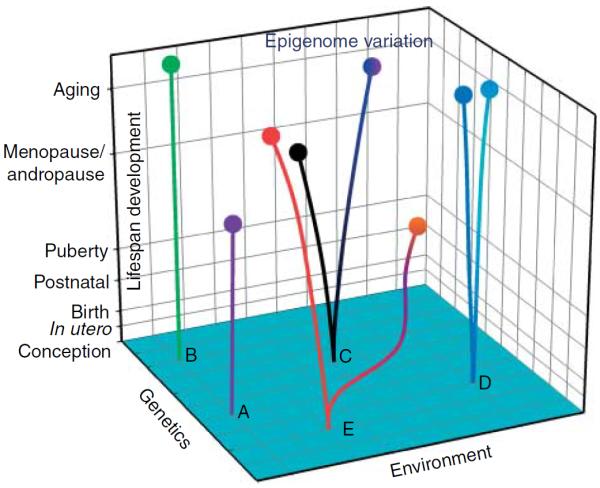Figure 3.

Genetics, environment, and stages of lifespan development interact in a three-dimensional space to create discordant endocrine phenotypes (epigenomes) from an identical genetic background (a single genome). Here, we use five pairs of monozygotic twins, in a schematic representation, to illustrate our understanding of this model. We applied the concept of principal component analysis to generate this diagram. The traditional view that an individual's phenotype is controlled solely by genetics (x-axis) is represented by two twin pairs A and B. According to this gene-centric view, the two twin pairs will have identical phenotypes despite continuous changes in their environment (z-axis) and over developmental time (y-axis). The more contemporary view argues that the interactions among genetics, the environment, and the developmental stages during the lifespan produce two different epigenomes, hence phenotypes, over developmental time in the twin pairs, albeit their identical genome at conception. The divergence of the phenotypes (epigenomes) of the twin pairs varies depending on the degree of environmental variations. Phenotype discordance is greatest in the E twin pair as compared with the C and D twin pairs (smallest variation), in agreement with their environmental variation. With advance in age (developmental time), their divergence in phenotype also expands. This model gives the various stages of lifespan development different weights to reflect their susceptibility to epigenetic modifications.
